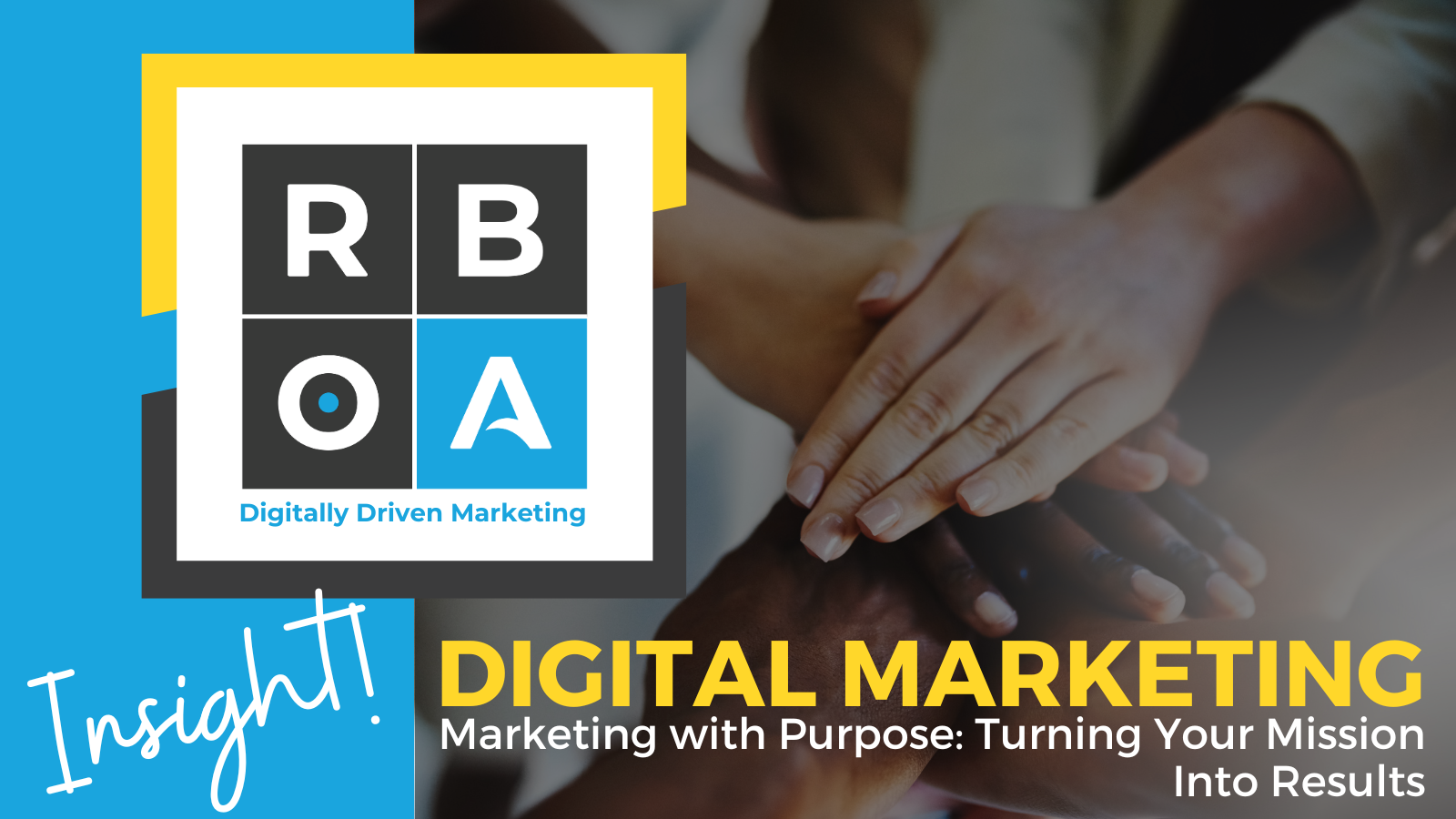As a small business owner, association leader, or nonprofit director, you juggle a lot—fundraising, membership growth, community engagement, and sales. Marketing might feel like just another task on your to-do list, but here’s the truth: when aligned with your bigger organizational goals, marketing becomes a powerful driver of success.
At RBOA Digitally Driven Marketing, we help organizations like yours connect the dots between mission, marketing, and measurable results. So, how do you ensure your marketing strategy works in sync with your broader business objectives? Let’s dive in.
1. Define Your Organizational Goals First
Before we talk marketing, let’s zoom out. Ask yourself: What is my organization’s primary focus this year?
- A small business might aim to increase revenue by 20% or launch a new product.
- A nonprofit may need to boost donor retention or increase program participation.
- An association could be focused on growing membership or engaging existing members.
Clearly defining these goals helps you create a marketing strategy that doesn’t just generate buzz but drives real impact.
2. Set SMART Marketing Goals That Support the Bigger Picture
A mistake we see too often? Organizations setting vague marketing goals—“We need more social media engagement” or “We should get on TikTok.” Instead, every marketing initiative should be SMART:
- Specific: What exactly do you want to achieve?
- Measurable: How will you track success?
- Achievable: Is this realistic based on your resources?
- Relevant: Does this support your organizational objectives?
- Time-bound: What’s the deadline?
Example: If your business goal is to increase sales by 20%, your marketing goal could be: “Increase website leads by 30% in six months through targeted SEO and paid advertising.”
For nonprofits, if the goal is to retain more donors, a marketing goal could be: “Increase donor email open rates by 15% and engagement rates by 10% in the next quarter through personalized email campaigns.”
3. Choose the Right Marketing Channels for Your Audience
Not every platform is right for every organization. Focus on where your audience already is.
- B2B businesses & associations: LinkedIn and email marketing are your best friends.
- Retail & local businesses: Facebook, Instagram, and Google Business are key.
- Nonprofits: Facebook, email campaigns, and cause-driven Instagram content work well.
SEO Tip: No matter your industry, invest in search engine optimization (SEO) to ensure people find you when searching for your services. For example, if you’re a nonprofit helping families in Florida, optimize for terms like “free child development screenings Florida” or “early childhood support near me.”
4. Use Data to Stay on Track
If you’re not measuring, you’re guessing. Track these key marketing metrics based on your objectives:
- For sales & revenue growth: Monitor website traffic, conversion rates, and cost-per-lead.
- For donor/member engagement: Track email open rates, social shares, and event sign-ups.
- For brand awareness: Measure impressions, reach, and referral traffic from social media.
Tools like Google Analytics, Facebook Insights, and CRM systems can help you stay on top of these metrics.
5. Align Content with Organizational Priorities
Your content should serve a purpose. Create content that naturally leads to action.
- For a small business launching a new product: Run a blog series on how your product solves a problem, backed by SEO-driven keywords to rank higher on Google.
- For a nonprofit seeking donors: Share real stories of impact—how past donations made a difference—and optimize for “best charities to support in 2025.”
🔗 Internal Link Strategy: On your website, make sure every piece of content links to a relevant call-to-action (e.g., “Learn more about our services”, “Donate now”, “Join our membership”).
6. Adapt & Improve Over Time
The digital landscape is always changing. What works today might not work tomorrow, so continuously analyze, tweak, and optimize your strategy.
- SEO Strategy Update for 2025: Google is prioritizing helpful, human-first content over keyword stuffing. Make sure your blogs and web pages provide real value—answering the questions your audience is searching for.
- Social Media Tip: Engagement matters more than ever. Instead of just posting, respond to comments, ask questions, and encourage user-generated content.
The Wrap: A Marketing Plan that Works FOR You
When your marketing efforts align with your organizational goals, you stop wasting time on trends that don’t move the needle. Instead, every blog, ad, and social post works toward what truly matters—more customers, more donors, more members, and more impact.
Want to ensure your marketing strategy is truly working for you? Let’s talk. Together, we’ll craft a data-driven plan that fuels your organization’s growth.
RBOA is a digital marketing agency with a 40-year legacy of creativity, smart strategy, and fresh thinking that delivers award-winning communications and successful results. We provide clients with a unique, omnichannel blend of advertising, social media, digital marketing, and web design services.
If you are interested in learning more about digital marketing for your organization, we hope you will reach out to RBOA to schedule an exploratory call.

